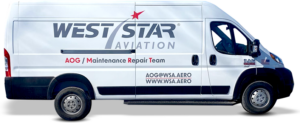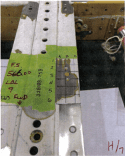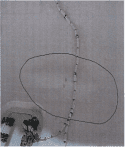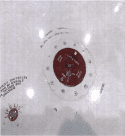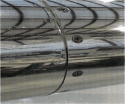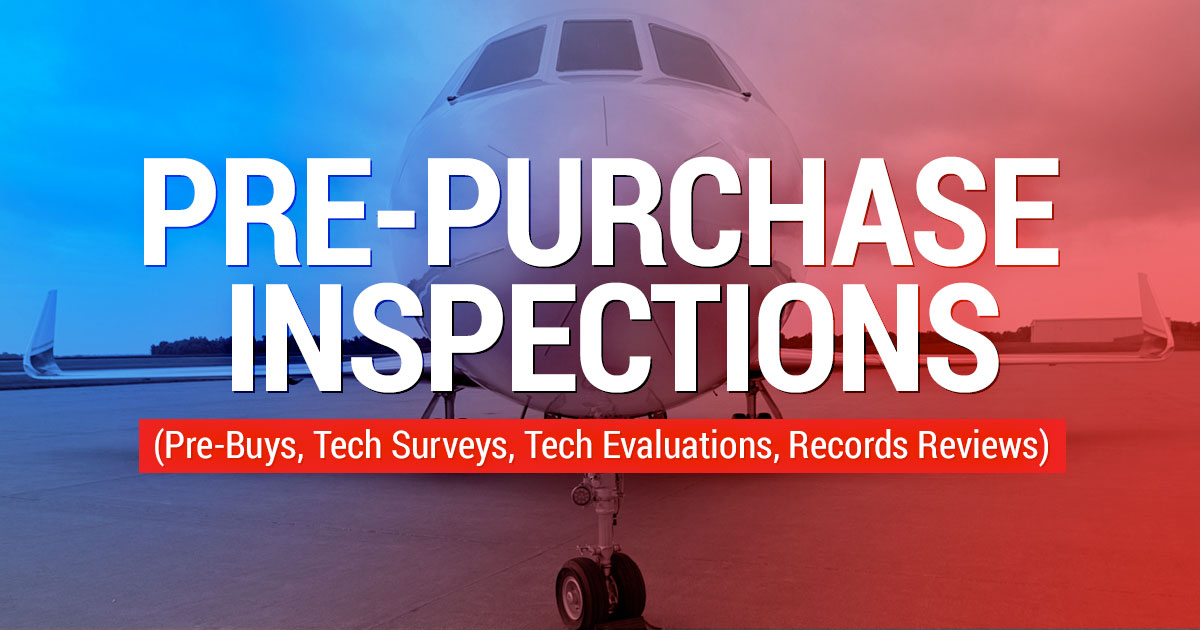
- 1. How To Prepare For A Pre-purchase Inspection
- 2. What is in the “Sales Agreement”
- 3. The depth of physical work scope
- 4. The scope of the records research
- 5. How to define what the seller is responsible to correct
- 6. Defining the term “Airworthy Discrepancy”
- 7. The length of pre-purchase inspection downtime
- 8. Related after-purchase modifications

Sometimes called tech appraisal or a pre-buy inspection, a pre-purchase inspection is the process of having a qualified entity evaluate, inspect and examine an aircraft that you are interested in purchasing. These inspections are vital in learning about any damage, wear or maintenance issues with a potential aircraft acquisition. The process can be complex, so what are the important things to know during a pre-purchase inspection? The experts at West Star Aviation can help guide you through the process.
Key points to understand during the process:
- 1. How To Prepare For A Pre-purchase Inspection
- 2. What is in the “Sales Agreement”
- 3. The depth of physical work scope
- 4. The scope of the records research
- 5. How to define what the seller is responsible to correct
- 6. Defining the term “Airworthy Discrepancy”
- 7. The length of pre-purchase inspection downtime
- 8. Related after-purchase modifications
1. How To Prepare For A Pre-purchase Inspection
Your pre-purchase inspection is important and proper preparation can save time, money and headache down the road. Here’s the basics:
- Review and fully understand the sales contract
- Define the work scope and records research criteria
- Define what the seller is responsible for correcting
- Agree with seller on the definition of an “Airworthy” discrepancy
- Perform the pre-purchase in-flight checklist (if applicable) prior to starting the physical pre-purchase inspection. The pre-purchase in-flight check is not in lieu of final acceptance flight.
- Determine who is responsible for crew/fuel expenses of the pre-purchase and acceptance flights
- Locate and organize your records, log books, 8130s by ATA chapter, 337s, 8110-3s, STC cover pages, STC Flight Manual Supplements, ICAs, burn certifications, completion & modification wiring diagrams, electrical load analysis, current equipment list, weight and balance records etc.
- Determine if the discrepancies found will be worked on in conjunction with the pre-purchase inspection or after it has been completed – this requires agreement between the buyer, seller and your chosen inspection facility
You should also prepare your expectations of the process ahead of time.
- Estimated pre-purchase inspection downtime does not include the correction of defects found – total downtime is always longer and sometimes by several weeks
- Understand that a pre-purchase inspection is not designed to find every discrepancy – it’s designed to give the buyer a general overview of the current condition of the aircraft and to review known problem areas specific make and model of aircraft
- The invoice for the pre-purchase inspection is usually paid in full prior to starting the process – all other invoices (buyer’s & seller’s) are generally required to be paid in full upon completion and prior to the release of the aircraft
- Understand the aircraft’s sales tax implications of the state you elect to close the aircraft purchase in
2. Understanding What’s In The “Sales Agreement”
First things first – let’s take a look at what should be in the “Sales Agreement”. This is the road map for the sale as well as the pre-purchase inspection. The Sales Agreement should at a minimum:
- Provide a clear list of the aircraft, total times, cycles and an accurate list of the equipment.
- Tell you how the aircraft is being sold (as is, warranties, etc.)
- Tell you who is responsible to correct the different types of discrepancies found
- Determine when the seller will have access to the information discovered
- Establish if there is a “Technical Acceptance” deadline
- Determine the scope of the pre-purchase and acceptance flights
- Define responsibility for the crew and fuel expenses for the prepurchase and acceptance flights
All of these items are important, so if any are absent or unclear in your “Sales Agreement”, ask for clarification.
3. Defining Physical Work Scope For Pre-purchase Inspections
It’s important to understand that there is NOT a standard pre-purchase inspection. Every facility develops their own pre-purchase inspection checklist based on their experience. Some facilities have 3-4 different levels of inspection. Generally, items can be added to a facility’s standard checklist, but not all facilities will allow you to delete items from their established list. It is also important to understand that there can be differences in the pre-purchase inspection within the same facility depending on the aircraft make and model.
Be sure to request a copy of your selected facility’s pre-purchase check list to ensure you understand the extent of the scope of work to be performed, particularly in these areas:
- Depth of the airframe inspection
What is included? Internal fuel tank inspections, gear inspections requiring partial disassembly, inspections under floor in galley and lav areas for corrosion, system operational or functional checks (landing gear, flight controls, trim systems, TRs, etc.), hydraulic fluid samples, pressurization leak tests, cabin furnishings
- Depth of avionics inspection
What is included? FAR 91:411 & 413 to RVSM limits, pitot-static leak checks, auto-pilot system checks, navigational and communication system checks, phone systems, data link systems, cabin management systems, ELT, CVR, FDR etc.
- Depth of engine and APU inspection
What is included? Ground runs, leak checks, performance of the day, general visual inspections of the engines, APU & pylons, borescope inspections of the engines and APU (need to determine if the engines or APU are on a service contract that prohibit borescope inspections first), inspection of fan and compressor areas for evidence of F.O.D, inspection of inlets, cowlings and TRs for general condition, delamination & corrosion, inspection of fuel and oil filters, testing of engine and APU oil samples
4. Understanding The Scope Of Records Research
Similar to the physical work scope, records research is another critical area where you need to understand what is included in the process. Your pre-purchase inspection should include the following:
- Verification that all log books and records are present with no gaps in entries
- Verification of the current times and cycles of the airframe, engines and APU
- Verification of maintenance program inspections and airworthiness inspection items are signed off in the records
- A list of any overdue inspections or maintenance items
- A list of when hourly and calendar inspections are due next
- A list of when life limited and overhaul components are due next
- A list of when the engines and APU are next due HSI and overhaul
- Verification of A.D. and Alert Service Bulletin sign-offs (airframe, engine)
- Verification of A.D. sign-offs on APU
- Verification of appliance A.D. sign-offs (this is generally an option)
- If the aircraft has sat idle for more than 30 days, verification that the proper airframe, engine and APU short or long term storage requirements were performed and recorded
- A check for 8130 tags for life limited and overhauled parts that have been replaced (this is generally an option)
- Verification that major modifications, alterations and repairs have been approved by FAA Documentation such as 337, 8110-3s or OEM documentation, burn certification and fire blocking (this is generally an option)
- Verification that all STC modification are FAA approved and have a copy of the 337, STC cover page, the FAA approved Flight Manual Supplement, the ICA (Instructions for Continued Airworthiness) along with any applicable maintenance /IPC manuals
- Verification of the ICA inspections and maintenance items are completed and signed off in the records
- A check for damage and/or repair history
- Determination if the aircraft is “damage tolerant” and if there are any recurring inspections due to modifications or repairs
- Check records for last actual Weight & Balance
- Check for aircraft’s wiring diagrams and electrical load analysis
5. Defining What The Seller Is Responsible To Correct
So there were some discrepancies found during the inspections. Now what?
First, the buyer is normally the one paying for the pre-purchase inspection and has to approve the release of the findings to the seller. When the results of the Pre-purchase inspection should be made available to the seller should be determined before the process begins. Before the process begins is also when to determine if the seller is only responsible to correct items related to airworthiness or out of Maintenance Manual limits.
Second, this is where the “Sales Agreement” specifics come into play. What does the “Sales Agreement” actually say? Some agreements state that the seller will be responsible for all airworthy discrepancies and that “all systems will be operating normally. This type of language can cause confusion and disagreement that can disrupt workflow.
For example, “all systems” – what does this include specifically? Video sources, sound systems, lights, cabin address systems, monitors, wireless headsets, coffee pots, ovens, microwaves, water and lav systems, service lights, electrical outlets, flashlights, portable equipment etc?
This is why the sales agreement is so important.
6. Defining An Airworthy Discrepancy
The best definition for “airworthy” is the one stated on the aircraft’s airworthiness certificate. It usually states that the aircraft “conforms to the type design”.
Airworthy does not only mean “safety of flight” items, but also includes any discrepancy found that does not have defined limits in the Maintenance Manual, Master Equipment List or other approvals by the OEM.
Generally, the facility performing the pre-purchase will deem items to be out of limits per the FARs, manufacturer’s maintenance manual or other OEM documentation.
Here are some examples of items that may be deemed as airworthy items or out of M.M. limits requiring repair of further OEM dispensation that may not be considered “Safety of Flight” items:
- Missing panel or edge sealer
- Missing or torn flight control seals
- Missing or torn fairing seals
- Missing or illegible placards
- Corrosion
- Nicks/scratches
- Fluid leaks
- Delamination, etc.
7. What Is The Appropriate Downtime For A Pre-purchase Inspection?
Great question. Unfortunately, there is not a definitive answer. Here’s why:
The average downtime needed to complete the physical inspection is 10 – 12 business days, excluding the correction of discrepancies.
Expect the records review and report generation to take an average of 12- 15 business days depending on the age of the aircraft and the thoroughness and organization of the records. This also excludes the correction of any issues found or obtaining missing records.
The total downtime of a pre-purchase inspection process can only be determined after all the discrepancies and corrective actions required have been determined.
8. Related After Purchase Modifications
Proper planning can again save time, money and headache. This is especially true with any after-purchase modifications you might want to have completed prior to operating the aircraft. Be sure to discuss any of these desired modifications ahead of time with the facility that is completing the pre-purchase inspection. This can include things like:
- Complete strip and repaint, stripe color or “N” number changes
- Interior soft goods, wood refinishing, cabin reconfiguration
- Galley or cabin lighting modifications (LEDs)
- New phone systems, monitors, cabin management systems, Wi-Fi etc.
- Avionics upgrades – FANS/CPDLC, WAAS/LPV, ADS-B, TCAS 7.1 etc.
